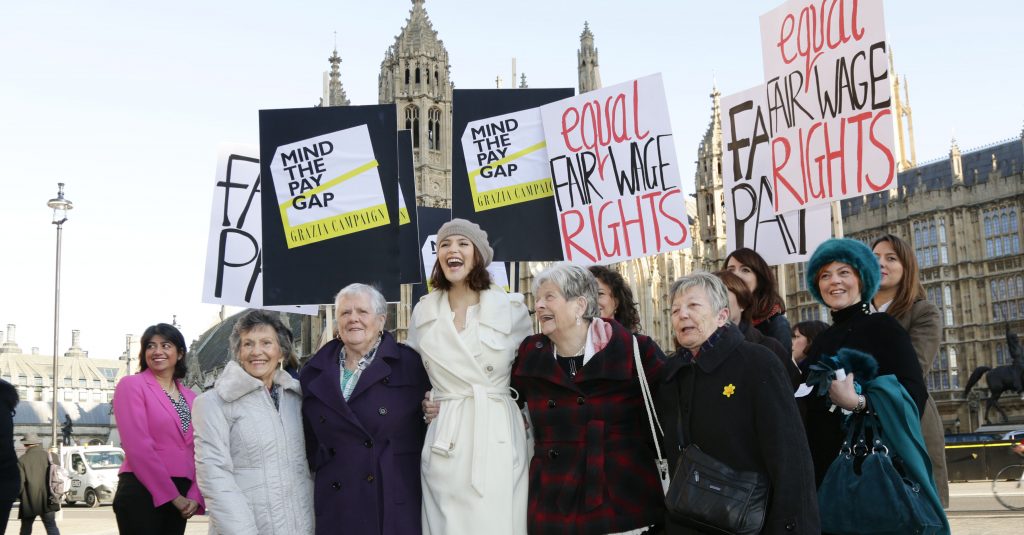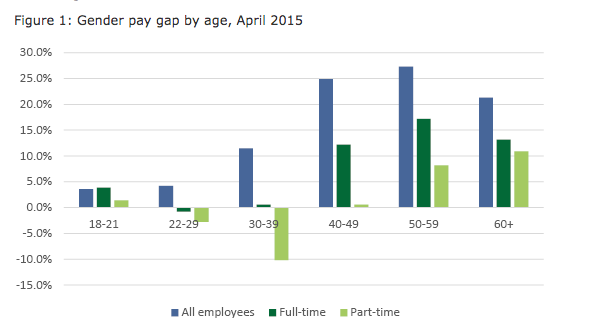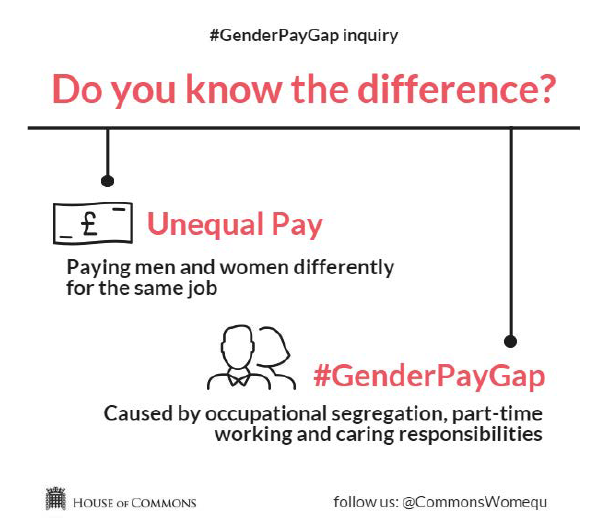
The UK government rejected suggestions on how to close the gender pay gap
We hear it all the time: if you’re a woman, you’re likely to earn a lot less throughout your life than a man. In the US, for example, women earn 79 cents for every dollar a man makes.
In October last year, women in Iceland left work almost half a day early to draw attention to the fact that they were – compared to men – basically working for free past 2:38.
It’s seen by some campaigners as one of the biggest barriers to women and a sign that our economies are far from equal. But it’s one of the economic topics that people just can’t agree on, some people think it’s a total myth – calculated by trying to add up incomparable things.
In the UK last year, a committee of MPs – the Women and Equalities Committee – published recommendations on how the government could deal with the pay gap in the UK. The government had previously said it would bring the whole thing to an end in the space of a generation, but rejected the suggestions the committee made. This week, the committee hit back – describing the government’s response as “deeply disappointing” and “inadequate”.

So what actually is the pay gap?

The is basically a calculation of the difference between the average hourly pay of the average man and of the average woman – in the UK, that figure is currently 19% across all ages and all industries.
But, the pay gap really kicks in when you look at women over the age of 50. Those aged 50-59 currently earn – on average – 27.3% less than men.
It gets wider still when you look at certain sectors. The financial services sector – which has some of the highest earning jobs in the UK, has a pay gap of 39.4%.
Why does it happen?
There are a lot of reasons for the pay gap. But the amount of women in part time rather than full time work makes a huge difference – 42% of women who work are in part time roles, compared to just 12% of men (according to statistics from 2013).
Lots of workplaces don’t offer part-time opportunities, particularly not in higher paid sectors. For example only 8.7% of jobs with a salary of over £20,000 offered flexible or part time work, that causes a huge problem when you think about all the other jobs women are often expected to do – childcare, for example.
Women also tend to gravitate to certain jobs – like the care or public sector. Women make up 70% of health and social workers and 2/3 of educational roles. It might seem like a generalisation, but these roles are historically a lot worse paid than something like engineering, for example, where only 9% of the workforce are women.
Is it discrimination?

But, none of those reasons deal with the problem of direct discrimination – an organization intentionally holding a woman back (whether through paying her less, or just giving her fewer opportunities) just because she is a woman.
It's also acknowledged both by the government and by the committee that direct discrimination does happen and it is actually illegal for companies in the UK to pay a woman less for doing exactly the same job – ‘equal pay for equal work’, is the basic rule, but it is really hard to prove it, if an employee thinks that's not happening.
The concept of equal pay and the concept of the gender pay gap are actually two different things, although they do often get confused.
The gender pay gap is a lot more complicated, which is probably why it's so often argued about. Because it's measured by an average wage across all earners it takes into account the fact that women might have different education choices or opportunities, that they might take time out of work, they might be less comfortable negotiating pay rises or promotions, or they might choose to work in different sectors – these all come together and mean that women on average earn less than men do.
The committee came up with a solution
The committee’s original plan was made up of 17 recommendations, including:
- Make all jobs flexible from the start, which would help women juggle childcare with their careers
- Improve the rules on parental leave for fathers and second parents to allow men and women to share care more equally
- Encourage traditionally low paid and female dominated sectors to improve their performance and their pay levels
- Create a scheme that will support women to return to employment after time out of the labour market
But the government rejected it
The government response was that current policies on shared parental leave, flexible working, and supporting women back into work were enough.
It said that it still needs to balance the needs of women with those of businesses. It believes that the policies it has introduced do just that, and that they are working. It thinks that the decision to make all big companies (with over 250 employees) publish details of their pay will encourage them to make sure pay is fair and equal, and said that the policy of providing free childcare will help working mothers, but it admitted there’s “more to do”
The committee said that by rejecting their suggestions, the government is failing to “effectively tackle” the main causes of the pay gap. Without dealing with what it says are three key issues – flexible working, shared caring responsibilities, and supporting women aged over 40 back into the workforce – the government won't be able to reduce it in the long term.
It's one of those issues that no one can come to a conclusion on, but with a report this week showing that the UK is now behind some of the world's other major economies in closing the gap, they should probably come to an agreement soon.



